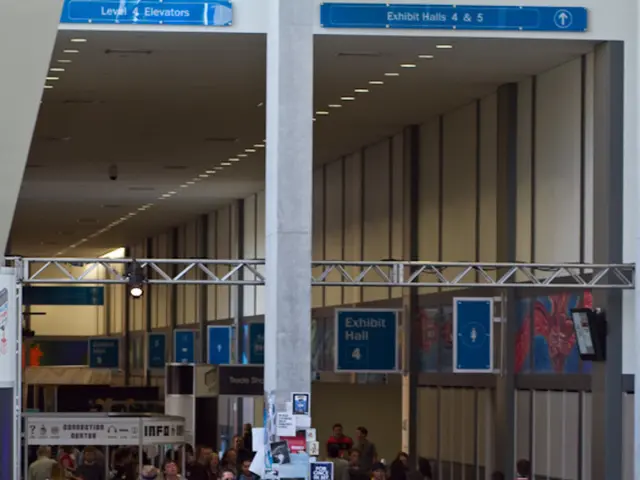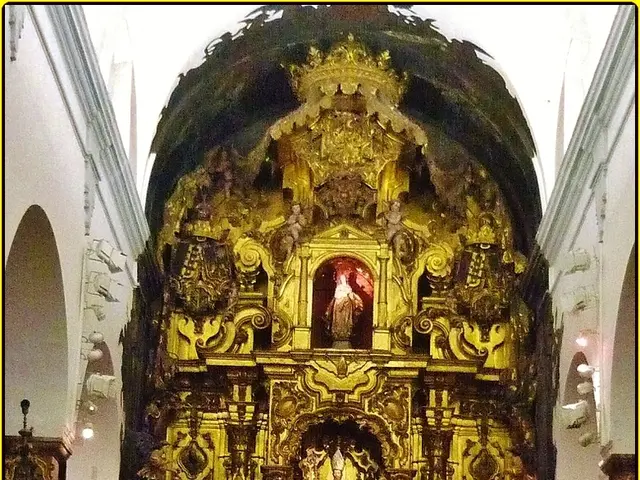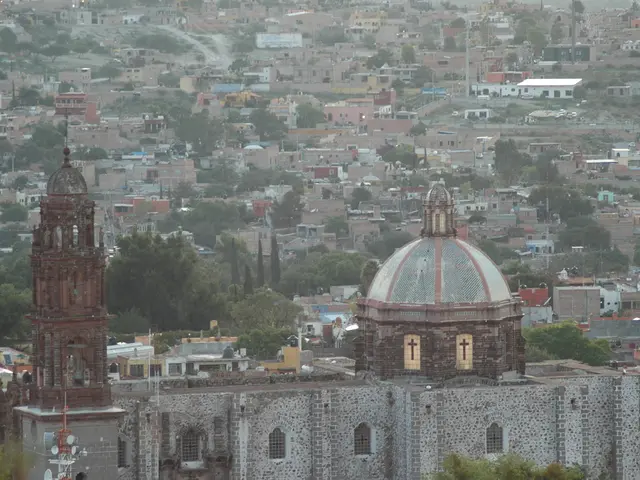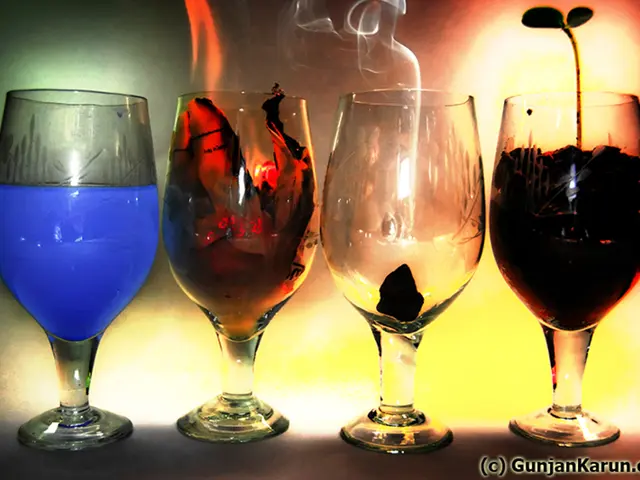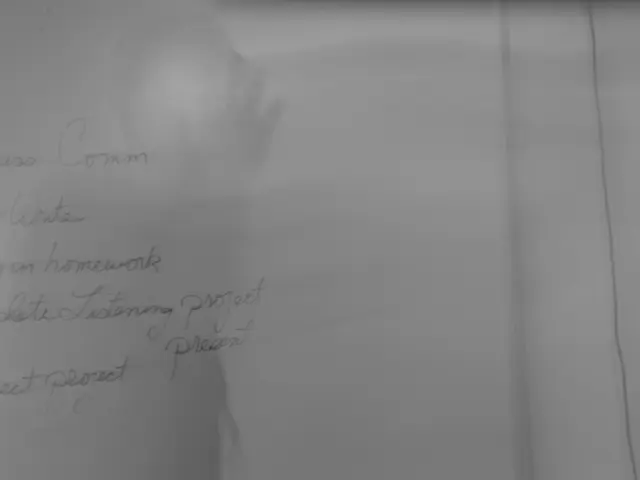Explore the sounds of renowned landmarks worldwide with Sonic Heritage
Hear the world like never before with Sonic Heritage! This groundbreaking project captures and shares the sounds of over 270 UNESCO World Heritage sites, inviting you to engage with some of the most iconic locations on Earth in a whole new way.
Ever felt like you've seen Machu Picchu a hundred times? With Sonic Heritage, you can now hear it! This innovative project presents a unique and refreshing shift in how we experience our world. Launched on World Heritage Day, it's the first ever global collection of soundscapes from UNESCO World Heritage sites and items of intangible cultural heritage. From the whispering winds through the ancient city of Tikal to the intriguing chatter of bats echoing in India's Ellora caves, it's an auditory adventure spanning 68 countries.
The vision behind Sonic Heritage is simple: to reframe the perception of these places from what they look like to what they sound like. "In our visually-centric culture, everything is about the Instagram-worthy angle," says the project's mastermind, Oxford-based sound artist Stuart Fowkes. "But there's almost no attention paid to the way these heritage sites sound."
Joining forces with the award-winning organization Cities and Memory, Sonic Heritage has spent six months collecting breathtaking sounds from their archives and open submissions from around the globe. The results range from the tranquil to the intriguing – imagine the soothing waves lapping against the Walled City of Essaouira, the slightly eerie hum of a wind turbine on Australia's Ningaloo coast, or the famous Old Faithful geyser erupting in full force.
But the project doesn't just stop at capturing these precious soundscapes. In a second phase, Sonic Heritage invited artists from all over the world to remix the recordings, reflecting their unique interpretations of each site's cultural, social, or environmental context. This creative approach not only showcases the depth and richness of these sounds but also serves as a testament to the power of artistic collaboration.
With the increasing threats to many unique environments from climate change, noise pollution, and overtourism, Sonic Heritage urges us to pay more attention to the sounds that accompany our most treasured sites and spaces. As the organizers question, "What role does sound play in enhancing our experience of the world's most significant places? What are the sonic landscapes that echo through the halls of history? How can we identify, celebrate, and preserve soundscapes before it's too late?"
By truly listening to the world around us, we might foster a deeper connection to heritage sites and perhaps even catch subtle signs of the ways we're inadvertently altering them. It's not all about tranquil forests and ancient echoes – the hum of machinery, distant roads, or even aircraft are creeping into many of the soundscapes.
So, take a break from the visuals, and give your ears a treat. Discover the incredible world of Sonic Heritage here.
Related:
- Portugal's 18th-century dancing horse tradition dances its way into UNESCO's heritage spotlight
- From sake to Slovak painting, what's new on UNESCO's Intangible Cultural Heritage list?
- Spicy sounds: How audio porn is tearing down the patriarchy, one orgasm at a time
- Keywords:
- overtourism
- heritage
- UNESCO Cultural Heritage List
- World Heritage Site
- Noise research
- UNESCO
Enrichment Data:
The Sonic Heritage project is a pioneering initiative that aims to preserve and promote the sounds of UNESCO World Heritage sites through several key strategies:
- Collection and Preservation of Sounds: The project collects and makes available a diverse range of sounds from UNESCO World Heritage sites and items of intangible cultural heritage. Some examples include the reverberation of the Taj Mahal, the cacophony of the Sistine Chapel, and the rustling leaves in the ancient city of Tikal.
- Digital Platform: These soundscapes are made accessible through an online digital platform, allowing global access and exposure to these unique auditory experiences.
- Raising Awareness and Promotion: The project emphasizes the significance of sound in experiencing historical and natural environments. By highlighting these soundscapes, it underscores the importance of preserving audio aspects of heritage sites, especially in the face of challenges like overtourism.
- Creative Engagement: The sounds are not just presented as field recordings; many are also recomposed and reimagined by artists into new compositions. This creative approach encourages artistic engagement with the sounds, further promoting their cultural value.
- Global Collaboration: The project involves artists and contributors from around the world, fostering a collaborative environment that helps spread awareness and appreciation for these sounds globally.
- Impact on Public Engagement: The project encourages people to listen more deeply to their surroundings, fostering a greater appreciation for the sonic aspects of cultural and natural heritage. Additionally, it marks World Heritage Day, drawing attention to the importance of cultural and natural heritage preservation.
- The Sonic Heritage project, in tandem with Cities and Memory, has been collecting and preserving enriching soundscapes from over 270 UNESCO World Heritage sites for six months.
- These soundscapes range from the tranquil to the intriguing, featuring items of intangible cultural heritage, such as the whispering winds through the ancient city of Tikal.
- In a second phase, artists from around the world were invited to remix the recordings, enhancing the project's cultural, social, or environmental context awareness.
- Over tourism, climate change, and noise pollution pose threats to many unique environments; thus, Sonic Heritage urges us to pay attention to these sites' accompanying sounds.
- Oxford-based sound artist Stuart Fowkes, the project's mastermind, highlights the lack of attention paid to the way heritage sites sound in our visually-centric culture.
- With the Sonic Heritage project, you can hear Machu Picchu, Ellora caves, and many other World Heritage sites in a completely new way, encouraging a deeper connection to these places.
- As our lifestyles continue to evolve, with advancements in fashion-and-beauty, food-and-drink, home-and-garden, and technology, the importance of preserving and celebrating our heritage, including its environmental-science and sonic aspects, becomes increasingly significant.



